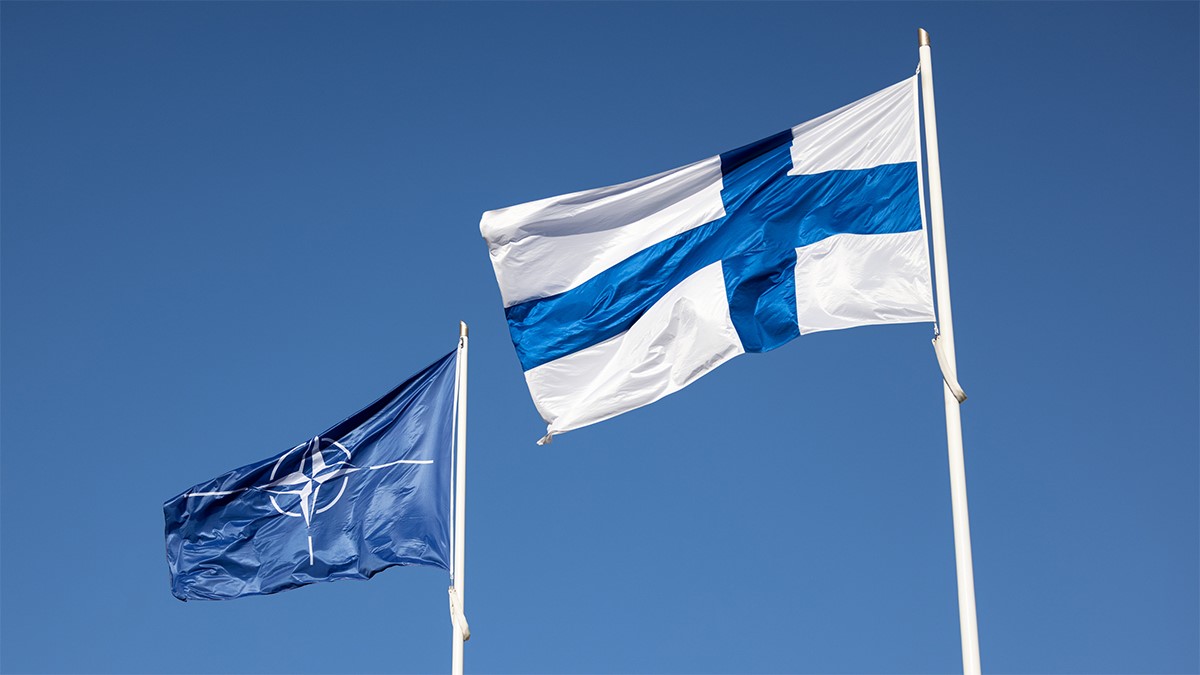Finland became the 31st member of the NATO Alliance on April 4. “On this very day, in 1949, the Washington Treaty, NATO’s founding treaty, was signed in Washington and it is hard to imagine a better way of celebrating our anniversary than to have Finland becoming a full member of the Alliance,” said the alliance’s Secretary General, Secretary General, Jens Stoltenberg.
Finland provides a substantial boost to NATO. It substantially adds to the amount of territory bordering Russia, in a region where three of the most threatened of the alliance’s members, Latvia, Estonia and Lithuania exist. It adds its modern and substantial armed forces to the NATO alliance, including 280,000 wartime strength personnel, modern equipment, including Leopard 2A6 tanks, F35 fighter jets, and other significant equipment, and a substantial defense budget. It’s 700 howitzers, 700 heavy mortars and 100 multiple rocket launchers gives it the largest artillery capability in Western Europe.
In testimony to the Senate Armed Services Committee in June, Celeste A. Wallander, Assistant U.S. Secretary of Defense for international security affairs stated that “Putin’s invasion of Ukraine caused a seismic shift in public opinion in both countries, and the legislatures of both countries quickly debated and ratified a motion to join the 30-nation alliance. Both Finland and Sweden are ready to contribute to alliance defense now. Finland maintains general conscription and has a well-manned and trained reserve that can be called up quickly, which is imperative since Finland shares a long border with Russia. Finland’s location on the Baltic Sea, diplomatic experience with Russia and advanced capabilities make it an asset to the alliance
Wallander added that “Finland spends more than 2 percent of its [gross domestic product] on defense, and possesses unique military capabilities and expertise, particularly operating in the arctic environment.”
If negotiations are successful, Finland will soon be joined by Sweden. The U.S. Dept, of Defense notes that Finland and Sweden would provide additional security and stability in Europe. The two Baltic nations already have close bilateral defense relationships with the United States, and have close working relationships and military interoperability with NATO militaries.
Wallander noted that “The fact that Sweden and Finland petitioned to join the defensive alliance is a sign of how much the security environment has changed with Russia’s unprovoked invasion of Ukraine. Both nations have been partners with NATO for decades, but really saw no need to join the treaty organization. Sweden’s accession into NATO would bring “a first rate and rapidly growing military with a principled foreign policy that ardently defends democracy and human rights. Sweden also maintains a world class defense industry. Sweden’s military expertise in the Arctic and undersea environments would substantially advance alliance capabilities.”
At the April NATO meeting of foreign ministers, other key matters were discussed, headlined by Putin’s invasion of Ukraine.
An issue that continues to be a controversy within the Alliance is the amount of each nation’s contribution. Secretary General Stoltenberg wants to have a “more ambitious defense investment pledge where we regard 2% of GDP for defense not as ceiling but as a floor, a minimum that we need to spend more in a more dangerous world on our security.”
Reflecting the accelerating global threat to NATO nations, the foreign ministers also discussed security challenges emanating from the Middle East and North Africa, the importance of increased defense investments, and NATO’s Indo-Pacific partnerships.
On that issue, NATO’s Asia-Pacific partners, including New Zealand, Australia, Japan, and South Korea were present at the meeting. Stoltenberg noted that “Security is not regional, security is global. What happens in Europe matters for the Indo-Pacific, for Asia. And what happens in Asia matters for Europe… when you see that China and Russia are coming more and more closely, that they stand together, work together, it makes it even more obvious that we need to stand together with our partners in the Indo-Pacific.”
